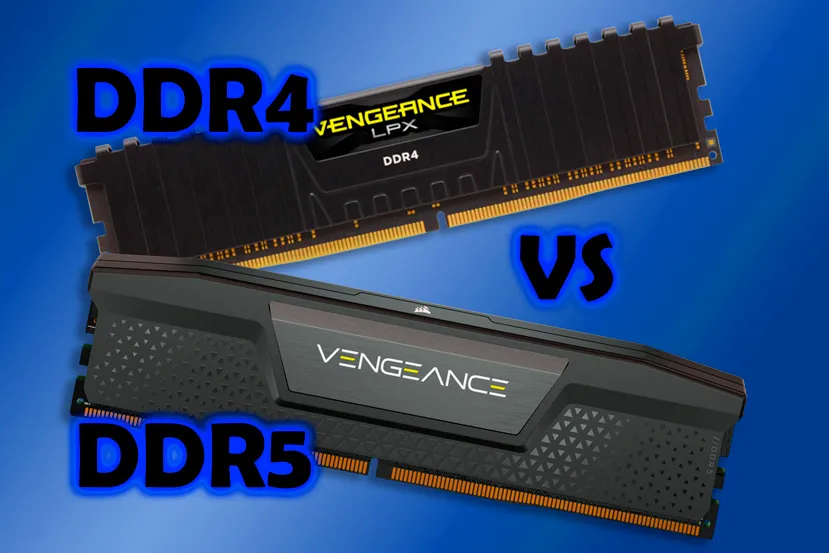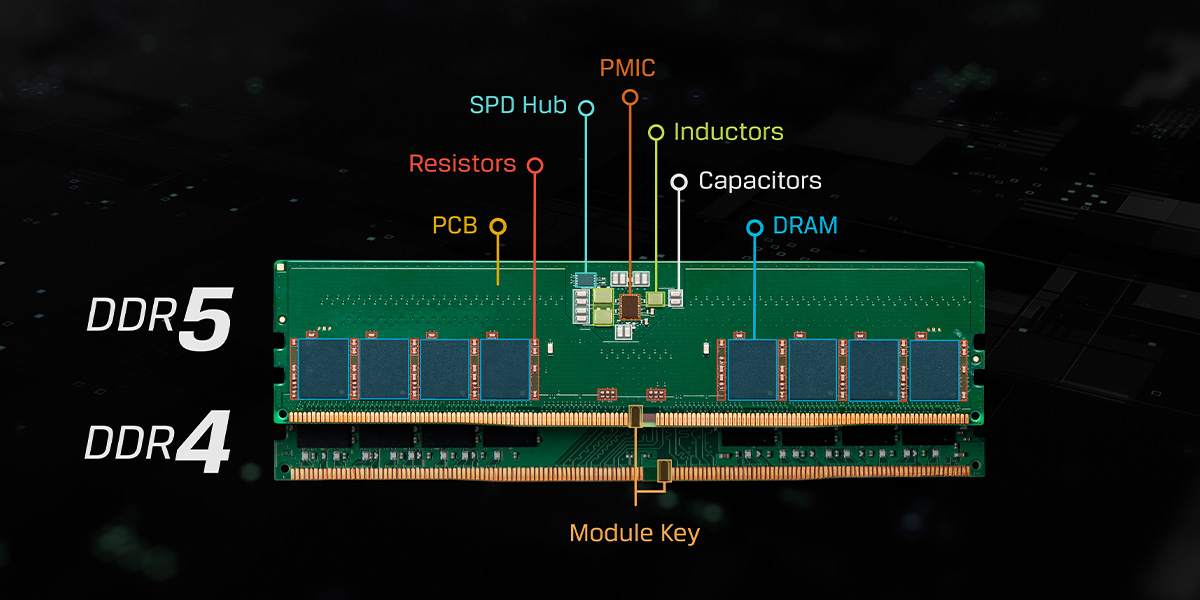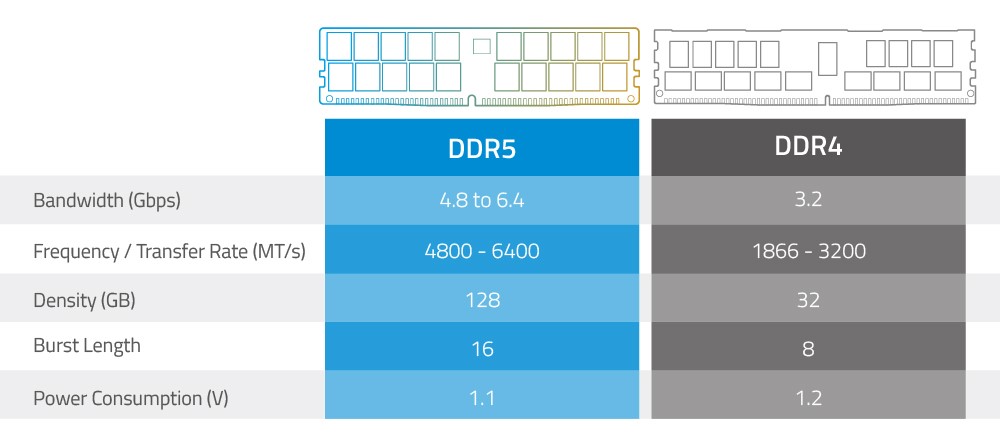DDR4 VS DDR5. THE DIFFERENCES
DDR4 vs. DDR5 Memory: Which Is the Right Choice for Your PC?
DDR4 In Depth
DDR4, or Double Data Rate 4, is a previous generation of RAM memory that has been widely used in computer systems for years. DDR4 is known for its reliability and energy efficiency. It offers speeds ranging from 2133 MHz to 4266 MHz and typical capacities ranging from 4 GB to 128 GB. Its operating voltage is 1.2 V.
Advantages of DDR4 include its widespread availability and affordability in the market. It suits most applications, from daily use to gaming and content editing. However, DDR4 has limited performance compared to more recent generations and is not as energy-efficient.
DDR5 In Depth
DDR5 is the latest generation of RAM memory available in the market. It offers significant improvements in performance and energy efficiency compared to DDR4. DDR5 is characterized by higher clock speeds, exceeding 8400 MHz, and capacities of up to 128 GB. It operates at a voltage of 1.1 V, contributing to its efficiency.
One of the most notable features of DDR5 is its increased bandwidth, making it ideal for high-performance applications like gaming and video editing. It also features improvements in power management and chip density, contributing to better performance and a longer lifespan. It's designed to meet the needs of modern computer systems and is especially effective in next-generation systems.
Differences
Key differences between DDR4 and DDR5 are evident in several areas. DDR5 offers higher clock speeds, significantly more bandwidth, and lower power consumption compared to DDR4. This translates to superior performance and greater energy efficiency. On the other hand, DDR4 is cheaper and widely available, making it a solid choice for systems that do not require maximum performance.
Real World Performance
To understand the difference in performance between DDR4 and DDR5, let's consider real-world usage scenarios. In gaming and video editing applications, DDR5 demonstrates superior performance due to its higher speeds and increased bandwidth. This results in shorter load times, smoother gaming experiences, and more efficient video editing.
However, for everyday tasks such as web browsing or word processing, the performance difference between DDR4 and DDR5 may be less noticeable. In summary, the choice between the two will depend on the specific needs and budget of the user.
Considerations When Choosing
When selecting between DDR4 and DDR5, it's essential to consider factors such as budget and motherboard compatibility. DDR4 remains a solid choice for older systems or limited budgets, while DDR5 is the preferred choice for high-performance systems. The motherboard must be compatible with the selected memory type, so compatibility should be verified before making a purchase.
Conclusion:
In summary, the choice between DDR4 and DDR5 depends on the user's needs and budget. DDR5 offers superior performance and is ideal for high-performance systems, while DDR4 remains a reliable and affordable option for older systems. Whichever the choice, RAM memory plays a crucial role in a computer system's performance.



Comentarios
Publicar un comentario